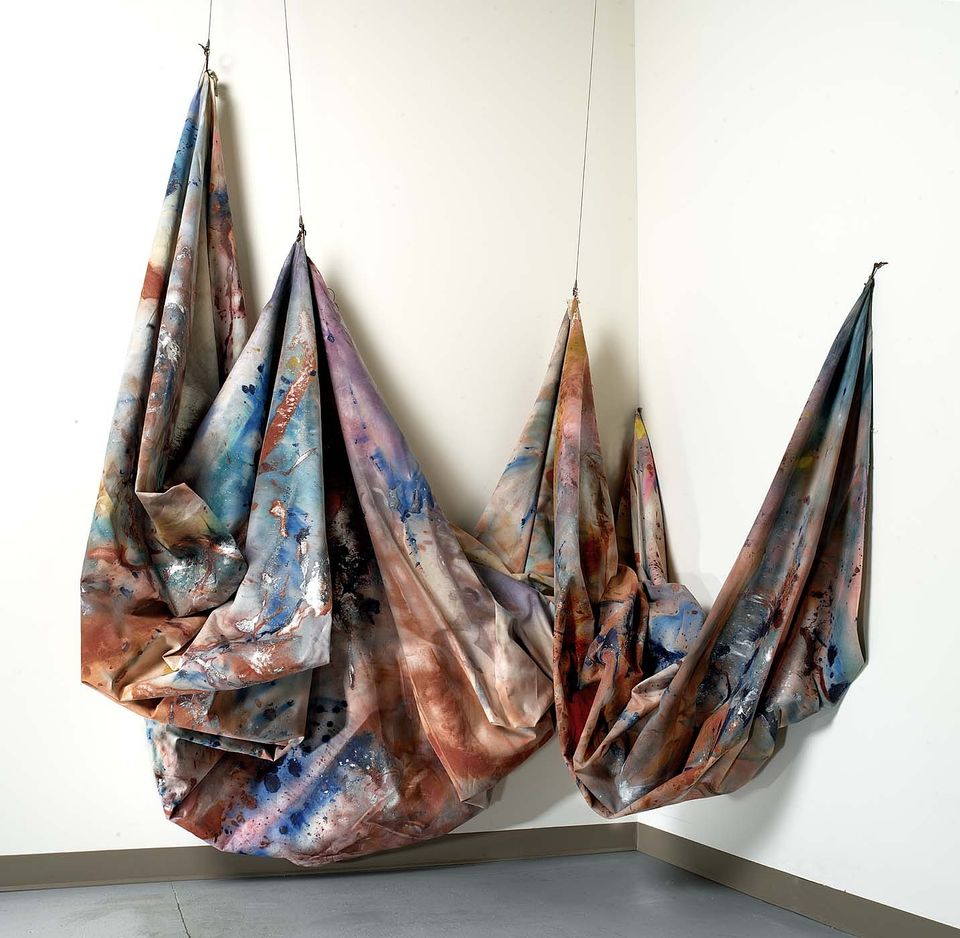

Sam Gilliam is represented in the current exhibition, Local Color, but there's another painting of his on display nearby. Swing is representative of the artist's canvases that were not stretched, but draped and suspended from the ceiling and adjoining walls. It is a color field painting, except the artist has changed the playing field: it's the same thirsty canvas that soaked up stain and pigment, but it's been folded and draped at various tension points and has been given a shape as it's suspended in air so we can imagine it moving in the rhythms suggested by its title. Swing is also a reference to jazz and the music Gilliam listened to while he painted.
Gilliam was born in Mississippi but moved to Washington, D.C. in the 1960s. By 1969, the year Swing was composed, D.C. had been torn apart by riots and the word assassination had become heard all too frequently. That summer man first walked on the moon. The earth seemed a place of terror and turmoil, but there was a whole new world to explore. Why walk on the earth when you can take slow, giant steps on the surface of the moon? Why look at painting in the same old way if the world suddenly felt like it had been turned on its head?
Change was everywhere. I think of this painting as both an homage and a protest, and out of Gilliam's dual motives came a new way of seeing things. It's still color field, all right, but it's the painting as a three dimensional work of art.
Both Gilliam and fellow artist Paul Reed (whose work is also part of Local Color) have helped to shape the local art scene for many years. On August 23 both of them will be speaking at SAAM along with critic Benjamin Forgey. It will be a great opportunity to learn about the local art scene and the city that inspired the color field artists. In addition, it could be the perfect time to learn more about his decision to "think outside the frame."
Related Information: Video interview with Sam Gilliam

















